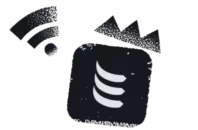A VLN, or Virtual Long Number, refers to a virtual phone number that is typically used for receiving text messages (SMS) or phone calls. It is called a “long number” because it is a regular telephone number, typically in a specific country, consisting of a full-length phone number with an area code or country code.
What is a VLN (Virtual Long Number)?
In the context of telecommunication services, a VLN, or Virtual Long Number, refers to a virtual phone number that is typically used for receiving text messages (SMS) or phone calls. It is called a “long number” because it is a regular telephone number, typically in a specific country, consisting of a full-length phone number with an area code or country code.
Virtual Long Numbers are different from short codes, which are shorter phone numbers typically used for SMS services that are charged at a premium rate. VLN numbers are often used by businesses and organizations to facilitate two-way communication with their customers.
For example, a company may acquire a VLN in a specific country to allow customers to send SMS messages to that number, which can then be received and managed by the company’s systems. Similarly, calls made to a VLN can be forwarded to a designated phone number or answered using automated systems.
Overall, a VLN provides a convenient and scalable solution for businesses to interact with their customers via SMS or phone calls, without the need for physical phone lines or devices associated with a specific location.
How do VLNs work?
Virtual Long Numbers (VLNs) work by utilizing the capabilities of telecommunications networks to route incoming text messages (SMS) or phone calls to a virtual number instead of a physical phone line. Here’s a general overview of how VLNs work:
Acquisition: A business or organization obtains a VLN from a telecommunications service provider. The VLN is typically associated with a specific country or region and resembles a regular phone number with an area code or country code.
Routing Configuration: The business configures the routing settings for the VLN. This involves specifying how incoming SMS messages or phone calls should be handled, such as forwarding them to a designated phone number or processing them using automated systems.
SMS Routing: When someone sends an SMS message to the VLN, the message is transmitted through the telecommunications network to the service provider. The service provider identifies the VLN as the recipient and routes the message accordingly based on the business’s configured settings. This can involve forwarding the message to a designated phone number, email address, or an application programming interface (API) for further processing.
Call Routing: Similarly, when someone calls the VLN, the call is routed through the telecommunications network to the service provider. The service provider identifies the VLN as the recipient and routes the call based on the configured settings. This can involve forwarding the call to a designated phone number, interactive voice response (IVR) systems, or call management platforms.
Business Interaction: The business or organization can then receive the incoming SMS messages or phone calls through the designated channels. They can respond to the messages or handle the calls using their preferred communication tools or systems.
VLNs provide businesses with a virtual presence in a specific country or region, allowing them to interact with customers via SMS or phone calls without the need for physical phone lines or devices associated with a particular location. This flexibility and scalability make VLNs a popular choice for businesses engaging in two-way communication with their customers.
VLN vs Short Code?
VLNs (Virtual Long Numbers) and short codes are both used in telecommunication services, particularly for sending and receiving SMS messages. However, there are some key differences between the two:
Number Length: VLNs are regular phone numbers that are typically full-length, resembling traditional phone numbers with area codes or country codes. In contrast, short codes are shorter, typically 5 or 6-digit numbers.
Cost: Short codes are often associated with premium services, meaning that sending an SMS to a short code may incur additional charges for the sender. On the other hand, sending an SMS to a VLN is usually charged at standard messaging rates, just like sending an SMS to any regular phone number.
Purpose: Short codes are commonly used for marketing campaigns, contests, and other interactive SMS services. They are designed to be easy to remember and are often used for high-volume messaging. VLNs, on the other hand, are more suitable for two-way communication with customers. They provide a virtual presence for businesses or organizations to receive SMS messages and phone calls, allowing for customer inquiries, support, or feedback.
Availability: Short codes are usually obtained through a process that involves applying for a specific code and obtaining approval from the relevant authorities. This process ensures that the codes are unique and dedicated to a particular business or service. VLNs, on the other hand, are regular phone numbers that are readily available and can be obtained from telecommunications service providers.
Coverage: Short codes may have limited geographical coverage, depending on the country or region. They are often specific to a particular country or service provider. In contrast, VLNs can be acquired for specific countries or regions, providing businesses with a local presence and the ability to receive messages or calls from customers within that area.
